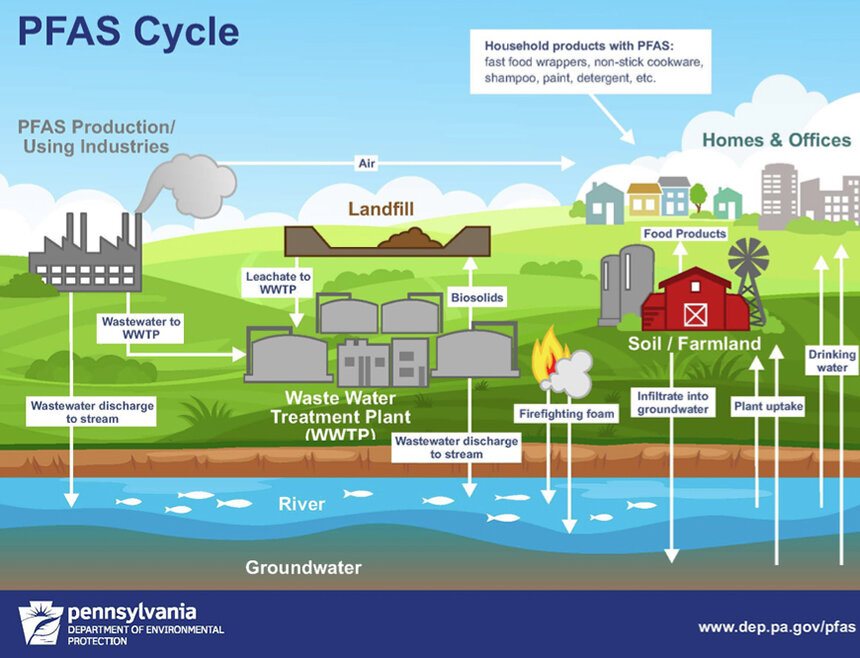Underground Tanks Leak Oil Into Blackstone River
January 21, 2015

WOONSOCKET, R.I. — Hanora Spinning is one of the few textile mills still operating on the Blackstone River. Since 1911, the factory has literally been spinning yarns made of wool and synthetic fibers.
The production of yarn itself doesn’t pollute the river. But an underground oil tank has left a lasting impact.
In 1990, a 20,000-gallon tank holding No. 6 fuel oil leaked into the soil, the water table, a public storm drain and a narrow, open canal that helps control seasonal flooding.
Residue from the leak reached the Blackstone River, about a dozen yards away. Records detailing the extent of the 1990 spill and cleanup are absent from the Rhode Island Department of Environmental Management (DEM). Nevertheless, according to engineering reports filed with DEM, the leaking steel tank was replaced with a fiberglass-coated tank.
According to those reports, a second and much larger leak occurred in 2000, when the new tank’s underground fuel line punctured. The hole was less than a half-inch wide, but led to the release of about 2,450 gallons of oil into the storm drain, groundwater and a flood pumping station. The 200-foot-long canal, called a swale, was coated in an 8-inch layer of oil.
The cleanup required the removal of 380 tons of contaminated soil, 547,000 gallons of petroleum-contaminated water, and 28,000 pounds of oil-soaked waste.
Thirteen holes, called monitoring wells, were dug at the site of the leak for ongoing inspections, which are performed weekly. Containment booms, with large absorbent pads, float at the edge of the river to collect seepage of oil from the leak. Currently, oil residue drains into the river during severe storms or whenever the water table rises and falls significantly.
The cleanup is ongoing. Contaminated groundwater is periodically vacuumed from the containment wells. In November 2000, 12,413 gallons of polluted water was vacuumed from one of the wells. Since 2007, more than 11,000 gallons of contaminated water has been vacuumed from the wells.
Hanora Spinning didn’t respond to an ecoRI News inquiry, but the leak highlights the problem businesses and the environment face with underground storage tanks (USTs). Such tanks have been around for hundreds of years, according to DEM, and Rhode Island has about 2,000 them. About 85 percent of the existing steel tanks leak, with many along waterways such as the Blackstone River.
In the case of Hanora Spinning, the 1990 leak was caused by a deteriorating single-layer steel wall, according to reports.
Some property owners don’t even know they have buried storage tanks, according to DEM. Yet, underground storage tanks are still permitted, although most fuel tanks are now built above ground for better monitoring.
According the Environmental Protection Agency (EPA), some 581,000 USTs are in use nationwide for the storage of petroleum or hazardous substances.
Because they are so common, DEM has staff dedicated to managing them. It wasn’t until 1986 that the EPA established regulations for managing USTs.
Categories
Join the Discussion
View CommentsRecent Comments
Leave a Reply
Related Stories
Your support keeps our reporters on the environmental beat.
Reader support is at the core of our nonprofit news model. Together, we can keep the environment in the headlines.
We use cookies to improve your experience and deliver personalized content. View Cookie Settings




of course, the guilty parties have stepped forward and are spending money to cleanup and restore oir environment??????!!!!!!
I have been told that residential underground storage tanks, for heating oil, are generally not monitored, or even registered in RI.
The technology exists to prevent these incidents. Double walled tanks and piping with interstitial leak sensors, or annual pressure tests on the pipes and tanks. I am admittedly not entirely familiar with the particulars of RI regulations regarding checking for compliance, but the fact of the matter is that these are entirely preventable incidents.
Where exactly is this located in Woonsocket? I thought Honora Mills was converted into housing for the elderly.?